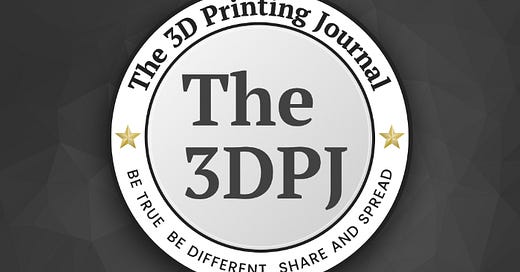Atomic Layer of the Day:
Today, Autodesk announced the release of the new version of its software, Autodesk Netfabb 2026, which introduces a number of significant changes and improvements for users involved in professional 3D printing.
The first major update is expanded compatibility with 3D printers from manufacturers such as Aconity3D, Farsoon, Formlabs, HP, Photocentric, SCANLAB, Schaeffler Special Machinery, Stratasys, and Weirather.
In the area of nesting, version 2026 introduces a new system called True Shape packing. This is a completely new implementation of the function, designed with serial production in mind. It offers high performance, strong configurability, and native support for part duplication and distribution across multiple build platforms simultaneously.
Automation and reporting have also gained new capabilities in this release. Lua scripts now include new methods for generating and serializing graphical data (such as screenshots), enabling better integration with database systems via ODBC connections.
Significant improvements have been made to the generation of support structures. Users can now rotate the entire grid of supports, saving time that would otherwise be spent repositioning individual beams. There is also new control over the orientation of supports in relation to the horizontal plane, which helps prevent deformation. Cluster detection has been enhanced to account for anisotropic recoater effects, and base plate geometry has been improved to increase rigidity and allow easier removal in one piece.
Local simulation has been further developed with the introduction of new configuration cards that allow for more realistic elastic fixation of the build plate. Additionally, ghost part generation now ignores overheating of supports and focuses solely on the geometry of the actual parts.
The JavaScript engine used in the Advanced Toolpath Utility (ATU) has been upgraded to V8, bringing with it a range of new features, including a code performance profiler and an outline panel displaying declared variables and defined functions for easier navigation.
Finally, from an organizational perspective, Netfabb Premium has officially been rebranded as “Netfabb” and is now available as part of the Autodesk Fusion with Netfabb package. At the same time, Netfabb Ultimate has been retired—there is no 2026 version available, and licenses for it can no longer be renewed.
Users holding an active license for Netfabb Ultimate can continue using version 2025.1, but new features will only be available in Netfabb (formerly Premium), which, as of the 2025 release, includes most of the features previously exclusive to the Ultimate edition.
With these changes, Autodesk has also ended the development of the Selective Space Structures (3S), Optimization Utility, and Lattice Topology Utility tools.
The pricing is as follows:
$5,300 per year for Autodesk Fusion with Netfabb
$33,950 per year for Netfabb Local Simulation.
Atomic Layer from the Past:
04-24-1989: Dr. Hans J. Langer and Dr. Hans Steinbichler founded EOS GmbH.
News & Gossip:
Vanessa Listek – longtime editor at 3DPrint.com – announced her promotion to Managing Editor. Currently, following the departure of former Chief Editor Michael Molitch-Hou to ASTM, the 3DPrint team consists of four authors: two Managing Editors – Listek and Sarah Saunders, one Executive Editor – Joris “Let Me Tell You What I Would Do If I Were Josef Průša” Peels, and one Macro Analyst – Matt Kremenetsky.
Japanese company TECDIA and U.S.-based Slice Engineering have launched the kaikaFIN, a 0.1 mm 3D printing nozzle for the Mako hotend, tailored for Bambu Lab printers. Unveiled at RAPID + TCT 2025, it offers high-resolution FDM printing with improved flow and precision. Now available in Japan and the U.S.
The Indian Army, IIT Hyderabad, and Simpliforge Creations completed India's first on-site 3D-printed military bunker in Ladakh at 3,350 meters altitude. Built in just five days, it’s the world’s highest on-site 3D print. The project showcases additive manufacturing’s potential for rapid, autonomous military infrastructure in extreme conditions.




